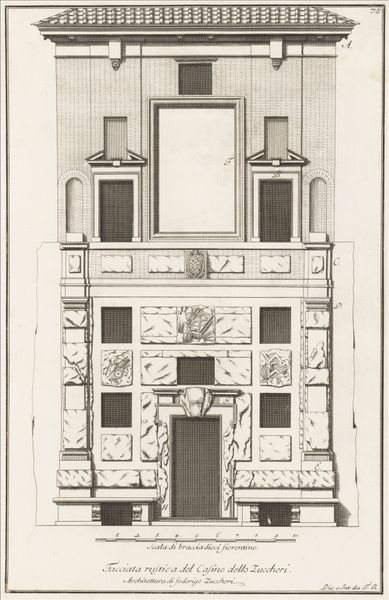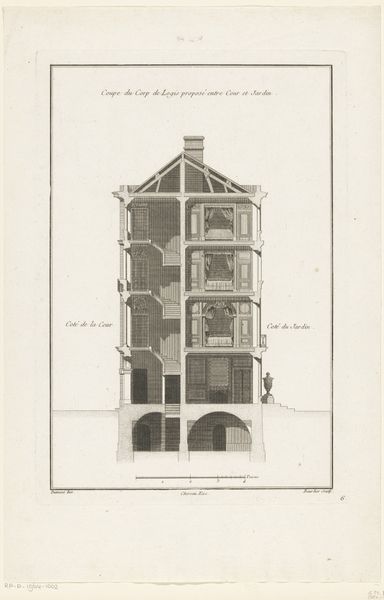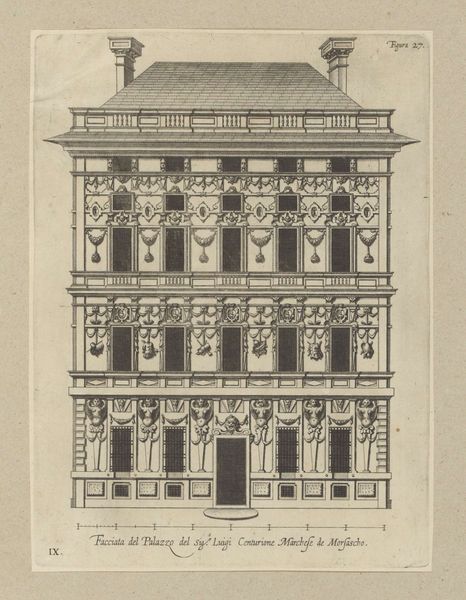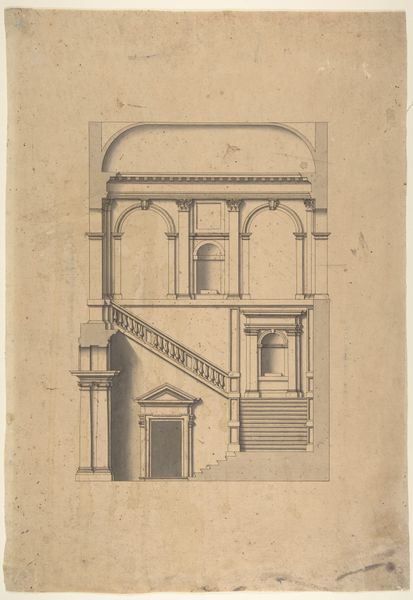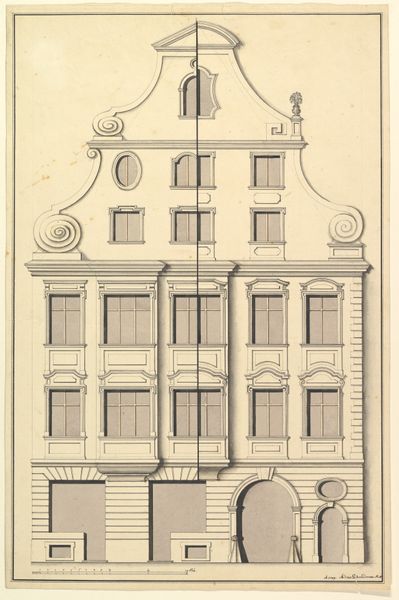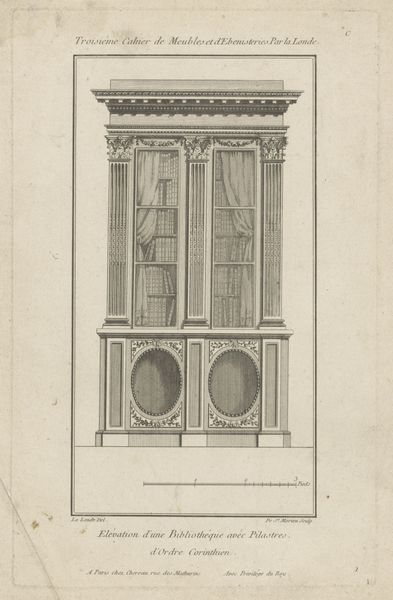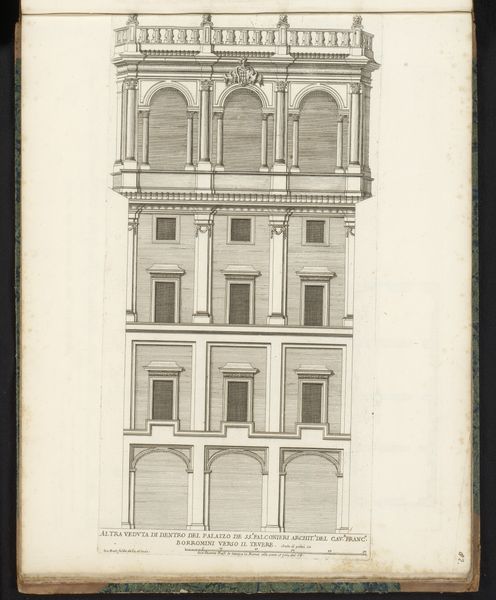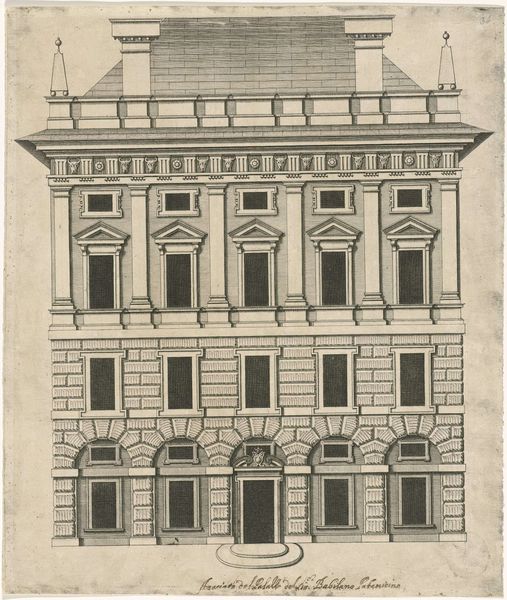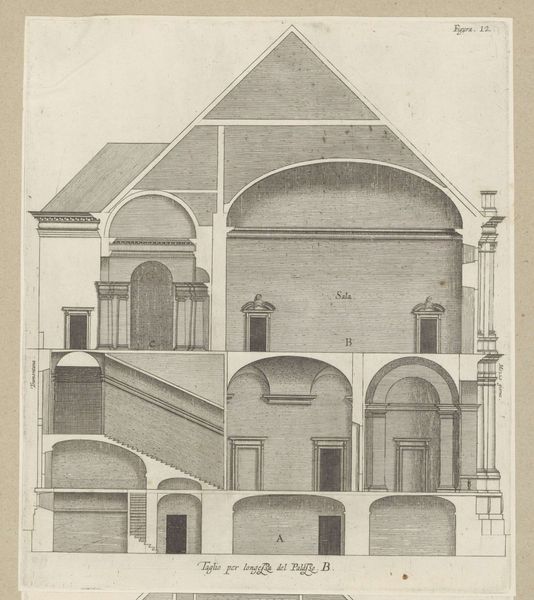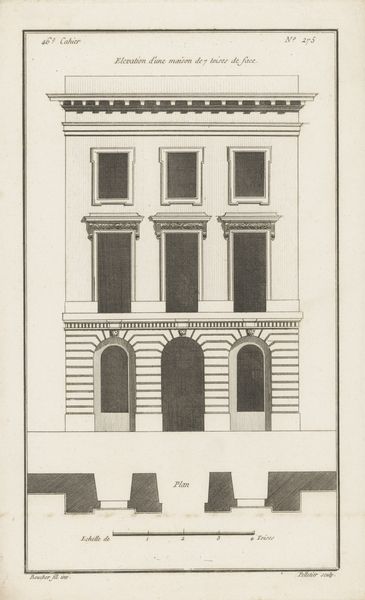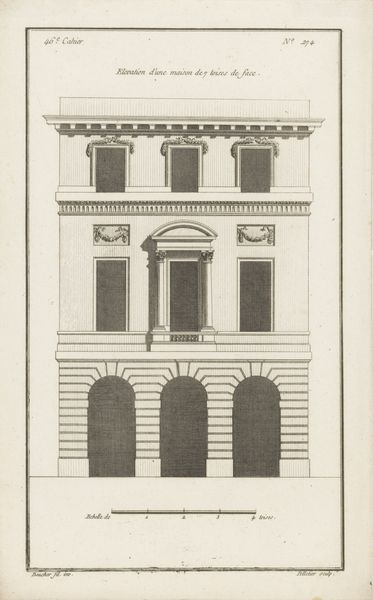
drawing, print, engraving, architecture
#
drawing
#
baroque
# print
#
perspective
#
geometric
#
line
#
cityscape
#
history-painting
#
engraving
#
architecture
Dimensions: sheet: 16 1/8 x 9 13/16 in. (41 x 25 cm)
Copyright: Public Domain
Curator: Let’s take a closer look at Isaac Ware's "End of Staircase, Houghton Hall, Norfolk," a print dating back to 1735. You can find it here at the Met. What strikes you about it initially? Editor: It's remarkably austere, almost chilling. Despite the grandeur of the architectural subject, the pale, precise lines lend it a clinical, diagrammatic feel rather than one of opulent baroque dynamism. Curator: Interesting. As a drawing and engraving, it really emphasizes line and form, doesn't it? It's not just a representation but almost a dissection of the architectural space. Ware was deeply involved in the construction process, so that hands-on knowledge definitely informs his precise depiction of the staircase and its decorative elements. The materials – the paper, ink, the plates used to produce this—were the currency with which ideas of design circulated. Editor: Precisely! You know, beyond the obvious design elements—the baroque flourishes, the suggestion of neoclassical order – what interests me is what's implied. How many hands were involved in realizing this vision, not just in its design on paper but also in building and decorating a space like this? Curator: Absolutely! We are only seeing one artist, but this represents an army of craftspeople, stonemasons, sculptors... all collaborating. Think of the labor, the transportation of materials, the complex logistics of 18th-century building practices, and the layers of hierarchy! Each individual contributing to a whole that dwarfed any single contribution. Ware’s design merely facilitated, gave permission for a flurry of material and physical exertion. It is funny to call a flat artwork so layered and 3-Dimensional in a human sense! Editor: And who ultimately gets to enjoy it? It highlights this massive divergence, this incredible contrast between artistic inspiration and material reality on one hand, but on the other also a sharp divide between the labor of making it real, versus the elite’s pleasure of occupation. Makes me wonder who the real artist is, and for whom all of this creation unfolds. Curator: That's a powerful question to leave with our listeners. The print then becomes a portal— not just into an architectural space, but also into a complex social landscape. Editor: Precisely! It certainly makes me appreciate the incredible tension residing inside, something that on its surface seems like a harmless design blueprint.
Comments
No comments
Be the first to comment and join the conversation on the ultimate creative platform.

